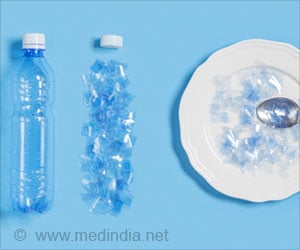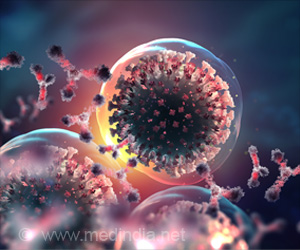Microplastics have infiltrated human ovarian follicular fluid, potentially affecting female fertility.
- Microplastics were detected in 78% of follicular fluid samples from IVF patients
- Average concentration was 2191 particles/mL, with particles small enough to penetrate cells
- Linked to oxidative stress and hormone disruption, microplastics may impact oocyte quality and fertility
This discovery marks a turning point in reproductive science, suggesting that the plastic pollution crisis has moved from oceans and landfills into human biology.
Microplastics may be silently sabotaging your fertility #reproductivehealth #plasticpollution #medindia’
How Do Microplastics Enter the Human Body?
Microplastics primarily infiltrate the body through ingestion (food and bottled water), inhalation (airborne particles), and skin contact. Recent estimates suggest that drinking water from PET bottles alone can expose individuals to between 110,000 and 370,000 particles—90% of which are nanoplastics. Once inside, these microscopic particles are capable of migrating through tissues, crossing cellular membranes, and even breaching the blood-placental barrier.Why Ovarian Health Is At Risk
Ovarian follicles are essential to reproductive success, housing developing eggs and producing hormones crucial for fertility. The presence of MPs in follicular fluid suggests that these particles are capable of penetrating deep into the reproductive system, where they may disrupt ovarian function through several mechanisms:- Oxidative stress, damaging DNA and mitochondria in egg cells
- Hormonal imbalances, altering estrogen and testosterone levels
- Immune system dysregulation, causing inflammation in ovarian tissues

What Does This Mean for Human Fertility?
Although the Italian study did not find a direct correlation between MP levels and pregnancy outcomes, the link between MP exposure and hormonal shifts—particularly in follicle-stimulating hormone (FSH)—is alarming. High FSH levels can indicate poor ovarian reserve, a key marker of fertility potential.The presence of MPs could be contributing to the global fertility crisis. According to the World Health Organization, 17.5% of couples experience infertility. Meanwhile, a 2023 meta-analysis revealed a 62.3% drop in total sperm count between 1973 and 2018. With MPs now detected in both semen and follicular fluid, the reproductive system is under unprecedented pressure.
The Plastic Trojan Horse: More Than Just Plastic
Worse still, MPs act like a sponge for environmental toxins—absorbing dioxins, heavy metals, phthalates, and endocrine-disrupting chemicals. When these compounds hitch a ride on plastic particles, they may produce synergistic effects that amplify toxicity in the body, increasing the risk of infertility, miscarriage, or long-term reproductive damage.There is also growing evidence that MPs can carry microorganisms, potentially increasing the risk of infections in sensitive reproductive tissues.
What Can We Do?
While research is ongoing, and human evidence remains in early stages, experts are calling for precautionary action. That means:- Reducing personal exposure to single-use plastics and bottled drinks
- Supporting green policies that limit plastic pollution
- Advocating for further research on human reproductive health impacts
- Encouraging fertility clinics to monitor environmental exposures in patients
Protecting future generations starts with protecting the environments within us—because even the smallest particles can leave the deepest scars.
Reference:
- First evidence of microplastics in human ovarian follicular fluid: An emerging threat to female fertility - (https://www.sciencedirect.com/science/article/pii/S0147651325002040)
Source-Medindia











